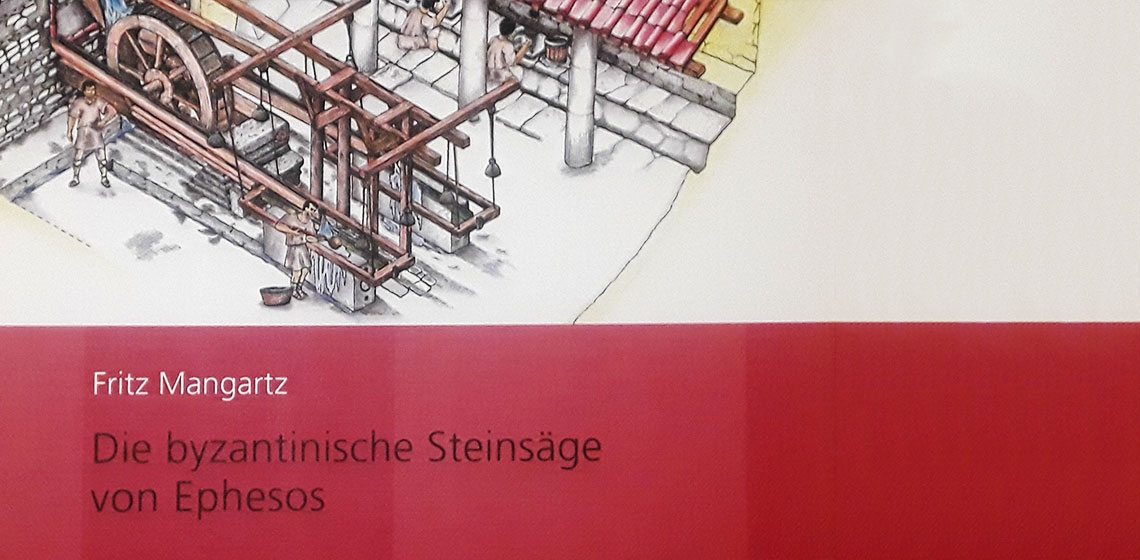
Baubefund, Rekonstruktion, Architekturteile
Monographien des Römisch-Germanischen Zentralmuseums Band 86
Water driven saws for cutting stone were thought of as being modern inventions, until recently. At present we have several finds that prove such machines existed in the Classic Era.
For the past couple of years, a cooperative project has existed between the Roman-Germanic Central Museum (RGZM) and the Austrian Archaeological Institute (ÖAI) to investigate this technique. Part of this research is experimenting with a true scale reconstruction. These experiments are the subject of the present book: The Byzantine stone saw of Ephesos: the find, the reconstruction, architectural parts.
There were five different attempts, and some modern compromises were made: the power for the drive, which in the Classic Era was produced by a water wheel, was this time produced by an electric motor; modern blocks served to deflect the ropes; and constructional details were designed following the experimenter’s own discretion or historic examples. Even considering these compromises, the results of the reconstruction resemble the archaeological finds well, and have added much to the understanding of antique stone saws.
The book’s design is very appealing – it holds many images, which illustrate the original material especially well. Being a technician however, I would have wished for more detailed photos and drawings of the reconstruction attempts because, especially in the description of technical details, one often can make people unfamiliar with the subject understand such equipment with proper illustration. Friends of antique architecture, with a weakness for technical history however, will be fully satisfied with this book.
Mainz, Verlag des RGZM 2010, 113 pages, with many black and white images and 23 coloured ones, € 45.00
Book information:
MANGARTZ, F., "Die byzantinische Steinsäge von Ephesos. Baubefund, Rekonstruktion, Architekturteile", Monographien des Römisch-Germanischen Zentralmuseums, vol. 86, Darmstadt, Römisch-Germanisches Zentralmuseum, pp. 112, 2010.